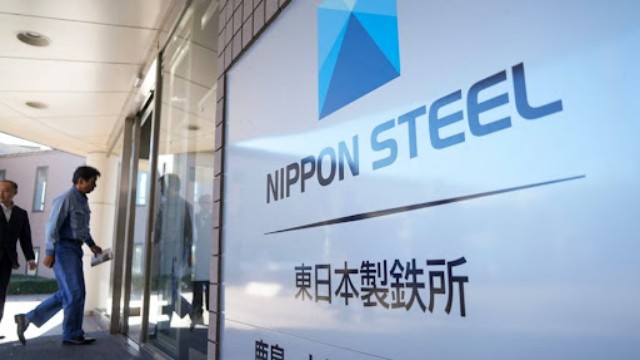
The Imperial Oil logo is seen during the company’s annual meeting held in Calgary on April 28, 2017. (Photo: Jeff McIntosh/The Canadian Press)
At Imperial Oil’s massive oilsands sites in Alberta, you’ll still spot traditional equipment like haul trucks and shovels—but now they’re joined by robots, drones, and cutting-edge artificial intelligence (AI) tools. The energy giant is stepping up its use of smart technology to cut costs, boost output, and improve safety across its operations.
Cheryl Gomez-Smith, who oversees production at Imperial, recently said the company’s tech upgrades have already added $700 million to the bottom line—and they're aiming for $1.2 billion in added value by 2027. Since 2018, Imperial has poured significant focus into adopting digital tools, with guidance from majority-owner ExxonMobil.
One major change is the use of self-driving haul trucks at the Kearl site. In Cold Lake, a site that uses steam wells to pull up bitumen, Imperial is deploying robot dogs—yes, dogs—named “Spot.” Developed by Boston Dynamics, Spot takes over many inspection rounds, helping free up workers for more complex tasks. Right now, two of these robots are on-site, with two more on the way.
But the company isn’t stopping there. It’s diving into generative AI, using data-powered insights to guide daily decisions in real-time. Drones piloted remotely are also being used to keep maintenance costs down, and some are soon expected to have built-in AI. Even pumpjacks, which extract oil, now use AI sensors to adjust their speed automatically for better efficiency.
Shannon Wilson from IBM Canada says automation is nothing new in this industry—but now it’s evolving fast with AI. She says AI not only improves productivity by sorting large volumes of data in seconds, but also helps spot potential maintenance problems before they grow costly. That means less downtime and smoother operations.
While big names like Imperial can afford to build their own systems, smaller firms are picking up ready-made tech from their service providers. “There’s a lot of innovation in the market,” Wilson notes. “AI isn’t replacing people—it’s helping them do more.”
Another major player, Canadian Natural Resources Ltd., said in a 2022 report that it’s using AI to monitor emissions from its offshore operations in the U.K. and Cote d’Ivoire. The tools help spot sudden changes in output that could signal rising emissions.
Suncor Energy, another oilsands leader, also uses AI to assign trucks and manage fuel stops at its Mildred Lake mine. Human workers still oversee the dispatch system, but AI handles the routine calls.
While AI brings big advantages, it also opens the door to new threats. According to IBM’s recent X-Force Threat Index, 10% of all cyberattacks in 2024 targeted the energy sector. That’s because energy infrastructure is both essential and vulnerable.
Tyler Williams from EY Canada warns that cyberattacks are becoming faster and more complex—some can be launched automatically using AI in just seconds. He believes companies must match that speed with strong, smart defences.
“Everyone’s paying attention,” he said. “They know what’s at stake. Now it’s about making sure the technology they use stays safe.”















